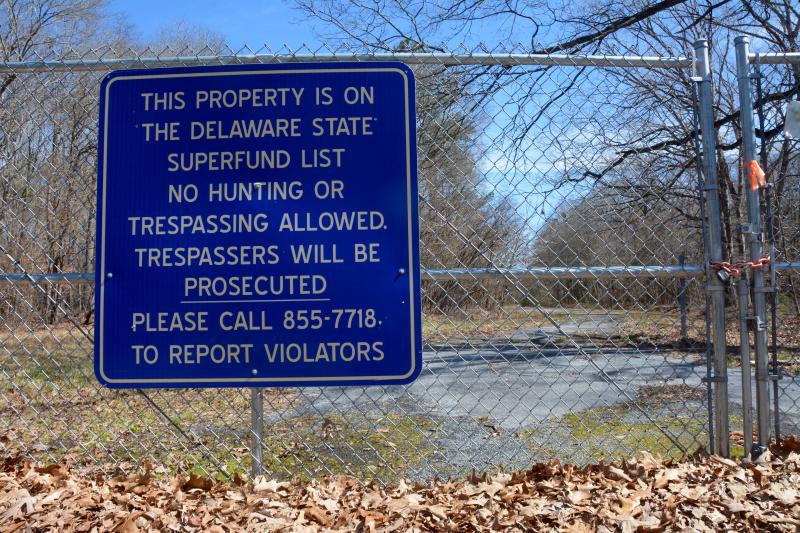The discovery of a 19-acre trash dump has drawn the attention of Sussex County Council. But from the 1960s into the 1980s, it was the county that ran the trash business and operated six landfills.
For decades since the landfills closed, the county has paid to monitor and maintain the sites. The price price tag for that work has climbed into the millions. Today, the county budgets from $75,000 to $125,000 per year.
It's a cost the county will pay forever, says county engineer Hans Medlarz.
Before the county provided landfills, residents dumped trash at town dumps and open pits that were not covered; large piles were routinely burned. Some of those dumps are now state-designated brownfields.
Lewes had a dump on lands in what is now Cape Henlopen State Park, across from the ferry terminal. Rehoboth Beach had one at the site of the current wastewater treatment plant.
Six landfills throughout the county
The county operated six landfills covering 600 acres starting in the late 1960s. Over the years, as each one reached capacity, it was converted to a transfer station. The last county landfill in Bridgeville closed in 1983 when Delaware Solid Waste Authority took over landfill waste disposal statewide and opened Jones Crossroads landfill to serve all of Sussex County.
The county maintained its sites as transfer stations until 1994, when the county finally got out of the trash business. Residential trash collected at county transfer stations was hauled to Jones Crossroads for disposal. “It was very costly to the county, and we needed to get out completely,” said Patti Deptula, the county's director of special projects.
All six sites – Laurel, Bridgeville, Stockley, Angola, Anderson Crossroads and Omar – are regulated under the Delaware Hazardous Substance Cleanup Act.
The Department of Natural Resources and Environmental Control's Division of Water and Hazardous Substances and Division of Water administer and oversee the sites under auspices of the U.S. Environmental Protection Agency.
Ground and surface water is tested using monitoring, irrigation and agricultural wells. Surface water bodies are also tested at the former landfill sites or in close proximity.
Hundreds of samples are collected each year from the six sites, Medlarz said. “We are very proactive in managing this legacy,” Medlarz said.
County has obligations to residents
As they closed, the landfills were covered with dirt and fenced in; over the years vegetation has overtaken the sites. “If you look on Google Earth today you would not know these are landfill sites,” Medlarz said.
The county is obligated to maintain buffer zones around the sites, and to provide central water systems to communities near the old landfills. One of the largest, Walker's Mill Park manufactured home community, is across from the Bridgeville landfill site. In 1996, the county hired Tidewater Utilities to install a central water system to serve the park and all adjoining residential parcels. Monitoring in the 1980s showed groundwater was contaminated with inorganics and volatile organic compounds.
When the 37-acre Laurel landfill closed in 1979, it was listed as a Federal Superfund Program site. It was found that waste had been deposited below the water table, threatening groundwater. Later in 2001, it was delisted after the county stepped up testing with additional monitoring wells and sampling.
Bob Stickels, Sussex County administrator from 1988 to 2006, said getting the Laurel site delisted was a major money-saving decision for the county. Although it cost the county almost $4 million in legal fees, it potentially saved as much as $20 million in cleanup costs required under the federal program, Stickels said. “We were able to prove that we didn't have industrial waste at the site,” he said.
Trash was a problem back in the 1970s
Joe Conaway, who served as county administrator from 1973 to 1987, said when he started his job he was given the task of cleaning up trash on the county's roads, an estimated 350 tons. “I was told we have a big problem, and you solve it,” he said.
The county created a program that revolved around a Samuel Sussex character with the slogan: “Sussex County is a pretty scene, let's keep it clean.”
A county-wide cleanup took place in 1973 with support from companies, schools and civic and youth groups. After a Saturday of cleaning roads, county staff drove trucks to locations to pick up hundreds of bags of trash for disposal at the county's landfills.
Until the last county landfill closed, taking care of trash was the county's No. 1 item in each year's budget. Conaway said a staff of constables constantly patrolled and answered complaints of roadside trash and illegal dump sites. “It was a dirty job, but they would search the piles and always find someone's name, and that became your pile to come back, clean up and take to a landfill,” he said.
Conaway said the landfill operator signed off to prove that the trash was dumped. “Some people did not cooperate, and we took them to court, but it didn't happen often,” he said.
Conaway said he never questioned the authority of operating county landfills. “It was our responsibility to do it. I don't ever recall a state law mandating it,” he said. The county's landfills were in operation before the federal 1972 Clean Water Act and 1970 Clean Air Act.
“Because they weren't required, none of the county's landfills had liners,” Conaway said. “It was pollution waiting to happen. It became a problem for the county, and that's why we closed them.”

















































